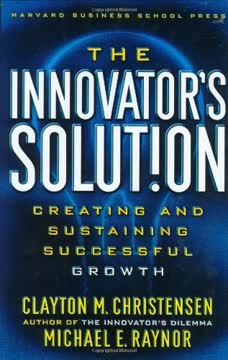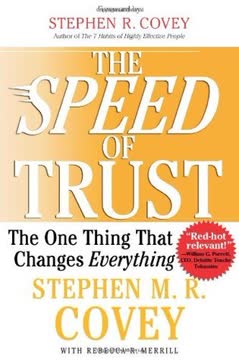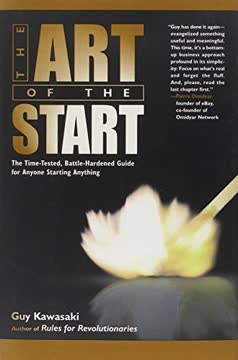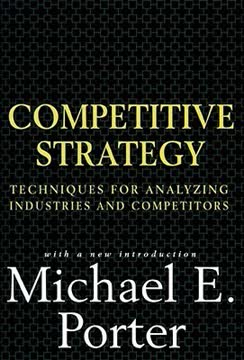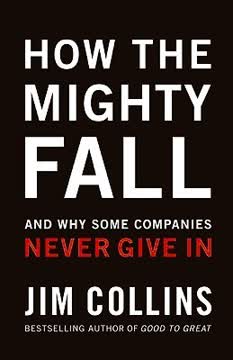نکات کلیدی
1. بزرگی در بخش اجتماعی نیازمند بازتعریف معیارهای موفقیت است
این که آیا میتوانید نتایج خود را کمّی کنید یا نه، واقعاً مهم نیست. آنچه اهمیت دارد این است که شواهد را بهطور دقیق جمعآوری کنید—چه کمّی و چه کیفی—تا پیشرفت خود را پیگیری کنید.
بازتعریف موفقیت. در بخش اجتماعی، بزرگی با سود اندازهگیری نمیشود بلکه با تحقق مأموریت سنجیده میشود. سازمانها باید معیارهای دقیق و همسو با مأموریت را برای ارزیابی عملکرد و تأثیر خود توسعه دهند. این اغلب نیازمند خلاقیت و تغییر از معیارهای متمرکز بر ورودی (مانند تخصیص بودجه) به معیارهای متمرکز بر خروجی (مانند زندگیهای تغییر یافته یا مشکلات حل شده) است.
رویکرد مبتنی بر شواهد. رهبران باید مانند دانشمندان یا وکلای دادگاه فکر کنند و مجموعهای از شواهد را برای نشان دادن پیشرفت جمعآوری کنند. این ممکن است شامل موارد زیر باشد:
- بازخورد کیفی از ذینفعان
- دادههای کمّی درباره نتایج برنامه
- شناخت یا جوایز خارجی
- عملکرد مقایسهای با سازمانهای مشابه
کلید موفقیت، ثبات و دقت در پیگیری معیارهای انتخابی در طول زمان است که به سازمانها اجازه میدهد بهبود را اندازهگیری کرده و به سوی بزرگی حرکت کنند.
2. رهبری سطح 5: ترکیب تواضع و اراده در ساختارهای قدرت پراکنده
رهبری سطح 5 به معنای "نرم" یا "مهربان" بودن یا صرفاً "شامل" یا "اجماعسازی" نیست. هدف اصلی سطح 5 این است که اطمینان حاصل شود تصمیمات درست—هرچند دشوار یا دردناک—برای بزرگی بلندمدت نهاد و تحقق مأموریت آن، مستقل از اجماع یا محبوبیت، اتخاذ میشود.
متواضع اما مصمم. رهبران سطح 5 در بخش اجتماعی تواضع شخصی را با تعهد بیوقفه به مأموریت سازمان ترکیب میکنند. آنها با ساختن ائتلافها، استفاده از اقناع و بهرهگیری از منافع مشترک، ساختارهای قدرت پیچیده را هدایت میکنند.
رهبری قانونگذاری. برخلاف مدیران عامل تجاری با قدرت متمرکز، رهبران بخش اجتماعی اغلب در محیطی "قانونگذاری" عمل میکنند. این نیازمند:
- ساختن اجماع بدون سازش بر اصول اصلی
- استفاده از "قدرت نرم" برای تأثیرگذاری بدون اختیار مستقیم
- توازن منافع چندین ذینفع در حالی که بر مأموریت متمرکز میمانند
- اتخاذ تصمیمات سخت که ممکن است محبوب نباشند اما به نفع بلندمدت خدمت میکنند
رهبران سطح 5 در این زمینهها باید در تصمیمگیری اجرایی و مانورهای قانونگذاری مهارت داشته باشند تا سازمانهای خود را به سوی بزرگی هدایت کنند.
3. اول چه کسی: اولویتبندی افراد مناسب با وجود محدودیتها
انتخابگری منجر به اعتبار با اهداکنندگان شد، که باعث افزایش بودجه شد، که امکان جذب و انتخاب افراد جوانتر به برنامه را فراهم کرد.
استعداد بر منابع. در بخش اجتماعی، داشتن افراد مناسب حتی از تجارت نیز مهمتر است به دلیل محدودیتهای مالی. سازمانها باید بر جذب افرادی که بهطور ذاتی با مأموریت انگیزه دارند تمرکز کنند.
جذب و نگهداشت خلاقانه:
- استفاده از جذابیت احساسی مأموریت برای جذب افراد پرشور
- ایجاد فرآیند انتخابی برای افزایش ارزش درک شده از موقعیتها
- استفاده از مکانیزمهای ارزیابی اولیه برای شناسایی عملکردهای برتر
- ساختن فرهنگی که عملکردهای برتر را از طریق پاداشهای غیرمالی نگهدارد
- سرمایهگذاری در توسعه افراد، حتی با منابع محدود
با اولویتبندی جذب و توسعه استعداد، سازمانهای بخش اجتماعی میتوانند بر محدودیتهای منابع غلبه کرده و تیمهای با عملکرد بالا و متعهد به مأموریت بسازند.
4. مفهوم جوجهتیغی: همراستایی اشتیاق، پتانسیل و موتور منابع
یک سازمان بزرگ سازمانی است که عملکرد برتر ارائه میدهد و تأثیر متمایزی در طول زمان دارد.
همراستایی سهدایرهای. مفهوم جوجهتیغی برای بخشهای اجتماعی شامل یافتن تقاطع:
- آنچه به شدت به آن علاقهمندید
- آنچه میتوانید بهترین در جهان باشید
- آنچه موتور منابع شما را به حرکت درمیآورد (زمان، پول، برند)
تمرکز بر موتور منابع. برخلاف کسبوکارها که تنها بر سود تمرکز دارند، بخشهای اجتماعی باید موتور منابع گستردهتری را در نظر بگیرند:
- زمان: جذب و نگهداشت داوطلبان و کارکنان متعهد
- پول: توسعه منابع مالی پایدار
- برند: ساختن حسن نیت احساسی و ذهنیت با حامیان
سازمانهایی که این عناصر را همراستا میکنند، جهتگیری واضح و جذابی ایجاد میکنند که تصمیمگیری و تخصیص منابع را هدایت میکند. این تمرکز به آنها اجازه میدهد به فرصتهایی که خارج از مفهوم جوجهتیغی آنها هستند "نه" بگویند و حداکثر تأثیر را در حوزه انتخابی خود تضمین کنند.
5. چرخدنده را به حرکت درآوردن: ساختن شتاب از طریق برند و نتایج
مردم میخواهند هیجان درگیر شدن در چیزی که بهطور کامل کار میکند را احساس کنند.
شتاب از طریق نتایج. اثر چرخدنده در بخشهای اجتماعی با ارتباط بین نتایج ملموس و شهرت برند هدایت میشود. همانطور که سازمانها مأموریت خود را انجام میدهند، اعتبار و ارتباط احساسی با حامیان خود میسازند.
چرخدنده مبتنی بر برند:
- ارائه نتایج استثنایی همراستا با مأموریت
- ساختن شهرت برند و ارتباط احساسی
- جذب منابع بیشتر (زمان، پول، حمایت)
- سرمایهگذاری مجدد در ظرفیت سازمانی
- ارائه نتایج حتی بهتر
این چرخه خودتقویتی شتاب ایجاد میکند و به سازمانها اجازه میدهد بر چالشهای تأمین مالی ناپایدار یا تغییرات سیاسی غلبه کنند. با تمرکز بر برتری مداوم و تحقق مأموریت، سازمانهای بخش اجتماعی میتوانند برندی قدرتمند بسازند که حمایت و منابع پایدار را جذب کند.
6. تفکر منظم: مواجهه با حقایق سخت در حالی که ایمان را حفظ میکنید
شما باید ایمان داشته باشید که میتوانید در نهایت به بزرگی برسید، در حالی که انضباط لازم برای مواجهه با حقایق سخت واقعیت فعلی خود را حفظ میکنید.
تعادل بین خوشبینی و واقعگرایی. پارادوکس استاکدیل برای رهبران بخش اجتماعی که با چالشهای دلهرهآور روبرو هستند، حیاتی است. این نیازمند:
- باور بیوقفه به موفقیت نهایی
- پذیرش صادقانه دشواریهای فعلی
- تمایل به تطبیق استراتژیها بر اساس واقعیت
تصمیمگیری مبتنی بر داده. رهبران باید:
- دادههای مرتبط با عملکرد سازمانی را جمعآوری و تحلیل کنند
- بازخورد صادقانه از ذینفعان و ذینفعان دریافت کنند
- استراتژیها و تاکتیکها را بهطور منظم بازبینی کنند
- شفافیت درباره چالشها و شکستها را حفظ کنند
با ترکیب ایمان به مأموریت با دیدگاه واضح از واقعیت، سازمانهای بخش اجتماعی میتوانند تصمیمات آگاهانه بگیرند، به شرایط متغیر تطبیق یابند و بهطور مداوم به سوی اهداف خود کار کنند، علیرغم موانع.
7. ساختن جیبهای بزرگی: غلبه بر محدودیتهای سیستمیک
بزرگی تابعی از شرایط نیست. بزرگی، در واقع، عمدتاً مسئله انتخاب آگاهانه و انضباط است.
تمرکز بر کنترلپذیرها. در حالی که چالشهای سیستمیک وجود دارد، رهبران بخش اجتماعی باید بر ایجاد برتری در حوزه نفوذ خود تمرکز کنند. این شامل:
- شناسایی حوزههایی که تأثیر فوری ممکن است
- اجرای بهترین شیوهها بدون توجه به محدودیتهای خارجی
- پرورش فرهنگ انضباط و بهبود مستمر
- جشن گرفتن و تکرار پیروزیهای کوچک برای ساختن شتاب
پیشرفت تدریجی. با تمرکز بر ساختن "جیبهای بزرگی"، سازمانها میتوانند:
- نشان دهند که چه چیزی علیرغم محدودیتها ممکن است
- توجه و منابع را به ابتکارات موفق جذب کنند
- به تدریج تغییر سیستمیک گستردهتر را تحت تأثیر قرار دهند
- انگیزه و روحیه را در محیطهای چالشبرانگیز حفظ کنند
رهبرانی که از فلج شدن توسط مسائل سیستمیک خودداری میکنند و در عوض بر برتری در حوزه فوری خود تمرکز میکنند، میتوانند تغییرات تحولآفرین ایجاد کنند، حتی در دشوارترین شرایط.
8. از خوب به بزرگ: چارچوبی جهانی برای برتری
شرکتهای تجاری بزرگ بیشتر با سازمانهای بزرگ بخش اجتماعی مشترک دارند تا با کسبوکارهای متوسط. و همین امر در معکوس نیز صادق است.
اصول بینبخشی. مفاهیم اساسی حرکت از خوب به بزرگ در تمام بخشها کاربرد دارد:
- افراد منظم: رهبری سطح 5 و بهدست آوردن افراد مناسب
- تفکر منظم: مواجهه با حقایق سخت و مفهوم جوجهتیغی
- اقدام منظم: فرهنگ انضباط و اثر چرخدنده
- ساختن بزرگی برای ماندگاری: ساختن ساعت و حفظ هسته در حالی که پیشرفت را تحریک میکند
تطبیق چارچوب. در حالی که اصول اصلی ثابت میمانند، کاربرد آنها متفاوت است:
- بازتعریف معیارهای موفقیت فراتر از سود
- هدایت ساختارهای قدرت پیچیده
- غلبه بر محدودیتهای منابع
- ساختن موتور منابع پایدار
- بهرهگیری از برند و ارتباط احساسی
با درک و تطبیق این اصول جهانی بزرگی، سازمانهای بخش اجتماعی میتوانند نتایج استثنایی و تأثیر ماندگار را بهدست آورند، صرفنظر از مأموریت یا حوزه خاص خود.
آخرین بهروزرسانی::
FAQ
What's "Good To Great And The Social Sectors" about?
- Purpose of the Monograph: The book is a companion piece to "Good to Great" by Jim Collins, focusing on how the principles of greatness apply to social sector organizations.
- Rejecting Business Norms: It argues against the notion that social sectors should emulate business practices, as many business norms correlate with mediocrity.
- Framework of Greatness: The book aims to build a framework of greatness applicable to both business and social sectors, emphasizing principles over practices.
- Research Methodology: It uses a matched-pair research method to compare organizations that became great with those that did not.
Why should I read "Good To Great And The Social Sectors"?
- Broadened Perspective: It offers insights into how principles of greatness can be applied beyond the business world, into social sectors like education, healthcare, and nonprofits.
- Unique Challenges: The book addresses specific challenges faced by social sector leaders, providing tailored strategies for overcoming them.
- Leadership Insights: It provides valuable lessons on leadership, particularly the concept of Level 5 Leadership, which is crucial for success in diffuse power structures.
- Practical Application: The monograph is based on real-world feedback and interviews with over 100 social sector leaders, making it highly applicable.
What are the key takeaways of "Good To Great And The Social Sectors"?
- Principles Over Practices: Greatness is defined by principles that transcend business practices, focusing on disciplined people, thought, and action.
- Level 5 Leadership: Effective leadership in social sectors often requires a blend of executive and legislative skills, emphasizing humility and professional will.
- Resource Engine: In social sectors, the economic engine is replaced by a resource engine, focusing on time, money, and brand.
- Flywheel Effect: Building momentum through consistent effort and results is crucial for achieving greatness in any organization.
How does Jim Collins define "greatness" in the social sectors?
- Mission-Driven Performance: Greatness is measured by how effectively an organization delivers on its mission, not by financial metrics.
- Outputs Over Inputs: The focus should be on achieving superior performance and making a distinctive impact, rather than merely managing resources.
- Qualitative and Quantitative Evidence: Organizations should rigorously track progress using both qualitative and quantitative evidence, even if outputs are hard to measure.
- Dynamic Process: Greatness is a continuous journey, not a destination, requiring relentless discipline and improvement.
What is the "Level 5 Leadership" concept in "Good To Great And The Social Sectors"?
- Leadership Hierarchy: Level 5 Leadership is at the top of a five-level hierarchy, characterized by a blend of personal humility and professional will.
- Legislative Leadership: In social sectors, leaders often operate within diffuse power structures, requiring skills in persuasion and coalition-building.
- Focus on Mission: Level 5 leaders prioritize the mission and cause over personal ambition, ensuring the right decisions are made for long-term success.
- Clever for the Greater Good: Leaders must be strategic and clever to navigate complex governance structures and achieve organizational goals.
How does the "Hedgehog Concept" apply to social sectors?
- Three Circles: The Hedgehog Concept involves understanding what you are passionate about, what you can be the best at, and what drives your resource engine.
- Resource Engine: In social sectors, the economic engine is replaced by a resource engine, focusing on time, money, and brand.
- Saying No: Organizations must have the discipline to say "No" to opportunities that do not align with their Hedgehog Concept.
- Sustainable Resources: The goal is to develop a sustainable resource engine that supports superior performance relative to the mission.
What is the "Flywheel Effect" in "Good To Great And The Social Sectors"?
- Building Momentum: The Flywheel Effect describes the process of building momentum through consistent effort and results, leading to a breakthrough.
- Success Breeds Support: As organizations achieve results, they attract more resources and commitment, which in turn leads to greater success.
- No Miracle Moment: Greatness is achieved through relentless effort and consistency, not through a single defining action or lucky break.
- Brand Reputation: In social sectors, brand reputation plays a crucial role in sustaining momentum and attracting support.
How does Jim Collins address the challenge of measuring success without business metrics?
- Outputs Over Inputs: Success should be measured by outputs, such as mission fulfillment and impact, rather than inputs like budget and resources.
- Qualitative Evidence: Organizations should assemble qualitative evidence, much like a trial lawyer, to track progress and assess performance.
- Consistent Assessment: The focus should be on developing a consistent and intelligent method of assessing output results, even if they defy precise measurement.
- Improvement Trajectory: Organizations should establish a baseline and rigorously track their trajectory toward audacious goals.
What are the differences between business and social sectors according to "Good To Great And The Social Sectors"?
- Economic vs. Resource Engine: In business, money is both an input and output, while in social sectors, it is only an input, with the focus on a resource engine.
- Leadership Dynamics: Social sector leaders often operate within diffuse power structures, requiring legislative leadership skills.
- Mission-Driven: Social sectors prioritize mission fulfillment over financial returns, requiring different metrics for success.
- Systemic Constraints: Social sectors face unique systemic constraints, but greatness is achieved through conscious choice and discipline.
What is the "First Who" principle in "Good To Great And The Social Sectors"?
- Right People First: Great organizations prioritize getting the right people on the bus and the wrong people off before deciding on direction.
- Early Assessment: In social sectors, early assessment mechanisms are crucial for ensuring the right people are in key positions.
- Selectivity and Passion: The process should be selective, tapping into individuals' passion for the mission, even if compensation is low.
- Talent Over Money: The right people can attract resources, but money alone cannot attract the right people.
How does Jim Collins suggest social sector organizations handle systemic constraints?
- Stockdale Paradox: Organizations must retain faith in achieving greatness while confronting the brutal facts of their current reality.
- Pockets of Greatness: Leaders should focus on creating pockets of greatness within their control, despite systemic challenges.
- Conscious Choice: Greatness is a matter of conscious choice and discipline, not a function of circumstance.
- Focus on What You Can Do: Leaders should focus on what they can do today to improve, rather than waiting for systemic changes.
What are the best quotes from "Good To Great And The Social Sectors" and what do they mean?
- "We need a new language." This quote emphasizes the need to distinguish between business and social sectors, focusing on greatness rather than business norms.
- "Greatness is not a function of circumstance." It highlights that greatness is achieved through conscious choice and discipline, not external conditions.
- "True leadership only exists if people follow when they have the freedom not to." This underscores the importance of genuine leadership, especially in social sectors with diffuse power structures.
- "The foundation for doing good is doing well." It stresses the importance of having a sustainable resource engine to effectively fulfill the mission.
نقد و بررسی
کتاب از خوب به عالی و بخشهای اجتماعی به خاطر بهکارگیری اصول کسبوکار در بخش اجتماعی و در عین حال رد این ایده که سازمانهای غیرانتفاعی باید صرفاً از کسبوکارها تقلید کنند، مورد تحسین قرار گرفته است. خوانندگان به بینشهای کالینز در زمینهی رهبری، مدیریت منابع و اندازهگیری موفقیت در سازمانهای مأموریتمحور ارزش مینهند. ماهیت مختصر کتاب هم نقطه قوت و هم نقطه ضعف آن است، به طوری که برخی خواهان عمق بیشتری هستند. بسیاری آن را الهامبخش و کاربردی برای رهبران غیرانتفاعی یافتند، اگرچه عدهای احساس کردند که برای سازمانهای مبتنی بر ایمان عناصر معنوی کم دارد. به طور کلی، این کتاب به عنوان یک همراه ارزشمند برای اثر اصلی کالینز "از خوب به عالی" محسوب میشود.
Similar Books


